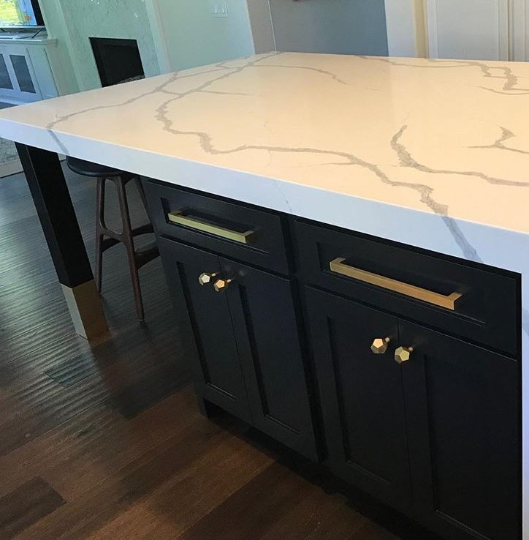Make Your Kitchen Island Stand Apart with Custom-made Legs For Kitchen Island
Make Your Kitchen Island Stand Apart with Custom-made Legs For Kitchen Island
Blog Article
An Overview to Picking the Perfect Legs For Kitchen Island for Your Home
Picking the ideal legs for your cooking area island is a nuanced choice that impacts both the performance and aesthetic appeal of this central space. Variables such as elevation, materials, and design play a crucial function in integrating your island with the general kitchen area design. In addition, recognizing the value of stability and maintenance can considerably affect your selection. As you take into consideration these aspects, it ends up being obvious that the ideal legs can transform not just the appearance of your cooking area but likewise its use for years to come. What details functions should you focus on in this selection process?

Understanding Cooking Area Island Legs
When choosing legs for a kitchen area island, it's important to recognize their visual and practical duties in the total style. The legs work as an essential support group, guaranteeing security and sturdiness for the island, which typically operates as a work area, dining area, or gathering place. The option of material and building strategy should be durable enough to hold up against daily usage and potential wear.
Along with their architectural duties, legs contribute substantially to the island's aesthetic appeal. They can improve the kitchen's style, whether with traditional, modern, or diverse designs. The elevation and percentage of the legs are also critical considerations; they should integrate with the island's kitchen counter elevation while guaranteeing comfortable seating for those using the area.
Furthermore, the leg design can influence the overall flow of the cooking area. Open, ventilated leg styles can develop a sense of lightness, while strong, considerable legs may communicate an extra grounded and secure aesthetic - Legs For Kitchen Island. Understanding these useful and visual facets will certainly direct homeowners in making educated selections that match their cooking area's layout and improve its usability
Popular Styles and Products
The selection of legs for a kitchen area island incorporates a selection of preferred styles and products, each offering special features that can enhance both performance and appearances. Amongst the most desired styles are modern, rustic, and conventional. Contemporary legs often include streamlined, minimalist styles that stress simpleness and tidy lines, making them perfect for modern kitchen areas. Rustic styles, on the various other hand, welcome natural elements and frequently showcase redeemed timber or distressed surfaces, including warmth and charm to the room. Typical legs normally display ornate details and craftsmanship, enhancing classic kitchen area layouts.

Height and Security Factors To Consider

The legs of the kitchen area island should provide appropriate support, making certain that the structure can hold up against daily use without moving or tottering. Product selection plays a substantial duty in security; metal legs, for circumstances, tend to offer greater stamina contrasted to wood.
Matching Your Kitchen Visual
Choosing the best legs for your kitchen island goes beyond capability; it additionally plays a considerable role in the general aesthetic of the room. When selecting legs, think about the layout style of your kitchen area. For a contemporary look, smooth metal or minimalist designs can produce a tidy, modern-day vibe. On the various other hand, rustic or traditional see page kitchen areas typically benefit from wood legs with intricate outlining or a distressed coating, boosting heat and character.
Color is one more vital aspect. Legs that complement or comparison with your island's surface area and surrounding cabinetry can produce aesthetic consistency or striking focal points. For example, matching dark wood legs with a light marble counter top can add depth and rate of interest. In addition, take into consideration the surface of the legs; matte, shiny, or distinctive surfaces can significantly impact the overall feeling of the kitchen area.
Installation and Maintenance Tips
Setting up cooking area island legs calls for mindful attention to detail to make certain both stability and visual allure. Use a stud finder to locate wall studs if you are affixing the legs to a wall surface or utilizing brackets for added support.
When safeguarding the legs, make use of high-quality screws and, if necessary, wood adhesive for extra stamina. For metal click here now legs, guarantee that you are making use of proper supports and tools to stop damages to your floor covering. It is a good idea to inspect for levelness after installation, making adjustments as needed to stay clear of wobbling.
Upkeep is similarly crucial for durability - Legs For Kitchen Island. On a regular basis inspect the legs for any type of indicators of wear or loosening, specifically in high-traffic locations. Clean the legs with an appropriate cleaner, preventing rough products that may scrape the surface area. For wooden legs, take into consideration using a timber conditioner periodically to maintain their finish. By following these setup and upkeep ideas, you can make sure that your cooking area island legs stay both hop over to these guys aesthetically attractive and functional.
Final Thought
In conclusion, selecting the suitable legs for a cooking area island requires careful factor to consider of elevation, security, and aesthetic compatibility. Ultimately, thoughtful leg option plays an essential duty in elevating both the usefulness and design of the cooking area room.
When selecting legs for a cooking area island, it's necessary to understand their practical and aesthetic duties in the total layout. Open, ventilated leg styles can produce a feeling of lightness, while strong, substantial legs may convey a more based and steady visual. The legs of the kitchen area island should offer sufficient assistance, making sure that the structure can withstand day-to-day use without tottering or changing.Mounting kitchen island legs requires mindful attention to detail to guarantee both security and aesthetic appeal.In final thought, picking the suitable legs for a cooking area island necessitates cautious factor to consider of elevation, security, and visual compatibility.
Report this page